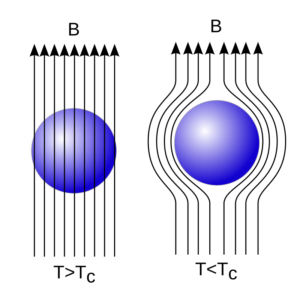Equilibrium and concept of potential well

- In all conservative field, potential energy U = U (x, y, z)
- If particle moves only along x-axis, then force Fx = – (∂U/∂x)
- Similarly Fy = – (∂U/∂y) and Fz = – (∂U/∂z)

- Force = slope of tangent at any point of the curve
- Since the tangent at P, Q, R and S are parallel to x-axis
- These positions are known as equilibrium positions.
- If a particle is slightly displaced from stable equilibrium position P, then it starts to oscillate between points A and B until it crosses point B.
- P is the position having minimum potential energy and is called stable equilibrium.
- The region of minimum potential energy bounded between points A and B is called potential well .
- The difference between the maximum and minimum potential energy of a potential well is called the binding energy of potential well.
- If the energy of particle is less than the B.E. of well, then it is always bound in the potential well and such state is called bound state .
- Let a particle be slightly displaced from its mean position P = (x = x0) then from Taylor series expansion, its potential energy at any point x is
- For stable equilibrium position P
- If P lies at origin i.e., x0 = 0 and U(x0) = 0
- For small displacement x3 → 0, x4 → 0, …
- In this position a curve between displacement and potential energy will be a parabola and F ∝ x
- Therefore the motion of particle in a parabolic potential well is always oscillatory and is simple harmonic .

To know more about potential well, click here for English and click here for Hindi


